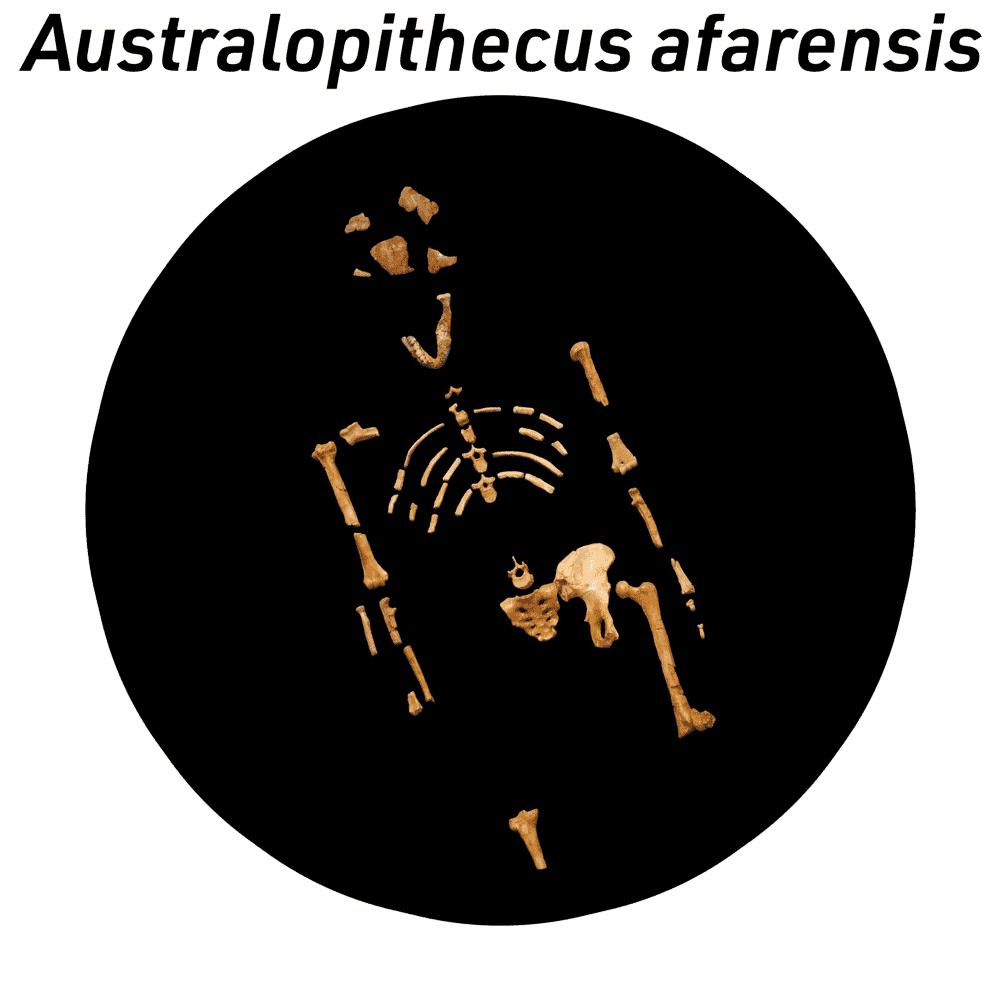Virtual lab: Australopithecus afarensis crania
The largest sample of cranial material of Australopithecus afarensis comes from Hadar, Ethiopia. Fossils of Au. afarensis from this site range in age from 3.4 million to 2.9 million years ago.

This virtual lab includes a model of the AL 444-2 cranium, which is both the largest and most complete single cranial specimen from Hadar. The other Au. afarensis model in this lab represent portions of anatomy from cranial fragments from several different individuals. Portions of this AL 333 composite reconstruction that are represented in the virtual lab by a dark gray color represent a scientific "best guess" about the cranial shape of Au. afarensis at the time these fragments were studied in the late 1970s and early 1980s.
The virtual lab also includes a model of a modern human skull, as well as the Sts 5 cranium of Australopithecus africanus.
As you examine the anatomy of the Au. afarensis cranial fossils, consider these questions:
- How do the missing parts of the AL 333 reconstruction compare to the same parts of the AL 444-2 cranium? What turned out to be the most accurate and least accurate hypotheses reflected in the reconstruction?
- Consider the preserved portions of the fossils represented here. What features do the Au. afarensis fossils share that are not also shared by either the chimpanzee or human skulls?
- What are the most noticeable differences between the Au. afarensis fossils and the chimpanzee skull?
Materials in this lab
- Original Au. afarensis fossil material from Hadar is curated at the National Museum of Ethiopia, Addis Ababa. The anatomical model of the AL 333 reconstruction in this virtual lab is based on measurements of a cast of the reconstruction. The anatomical model of the AL 444-2 cranium is based on measurements and photographs of the original fossil.
- The model of the human calvaria is based on an anatomical model created by Hannah Newey. The model is available on Sketchfab with a Creative Commons Non-Commercial Share-alike (CC-BY-NC-SA) license. I reduced the polygon count of the model for this virtual lab.
- The chimpanzee model in this lab is based on data from an osteological specimen in the Biological Anthropology collection at UW-Madison.
Back to full list of virtual labs